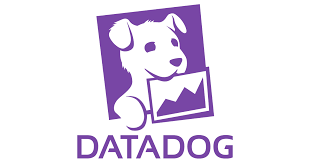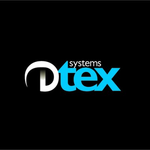Top Network Monitoring Softwares
In our interconnected digital landscape, Network Monitoring software plays a crucial role in maintaining seamless operations. This category of tools enables businesses to track, analyze, and optimize their IT networks, ensuring performance reliability and security. By identifying issues quickly, such software aids in minimizing downtime and enhancing resource allocation. Moreover, it provides insi... Read More
118 companies found
Product Description
Datadog is a cloud-based monitoring and analytics platform designed for developers, IT operations teams, and businesses running on agile systems. Its primary purpose is to provide an easy way to monitor servers, databases, tools, and services through a unified dashboard. By keeping track of these various components in real-time, Datadog helps teams identify and resolve issues faster, ensuring smoo... Read More
Users
- • No Data
Industries
- • No Data
Market Segment
- • No Data
Product Description
Sysdig is all about helping businesses keep their online operations running smoothly and securely. At its core, Sysdig provides tools that monitor and protect applications running in the cloud. It ensures that everything is functioning as it should and that any potential security issues are flagged before they become a problem. For companies that rely on software and online applications, Sysdig o... Read More
Users
- • No Data
Industries
- • No Data
Market Segment
- • No Data
Product Description
ExtraHop is a software company that focuses on providing solutions to help businesses spot and respond to security threats quickly and efficiently. Rather than relying on traditional methods that might miss something important, ExtraHop uses advanced techniques to give you a clear look at all the interactions happening within your network. This helps you understand exactly what is going on and if ... Read More
Users
- • No Data
Industries
- • No Data
Market Segment
- • No Data
ScienceLogic
Product Description
ScienceLogic is a software platform designed to help businesses keep a close eye on their IT environments. Think of it as a powerful tool that assists companies in monitoring their networks, systems, and applications all from one location. It takes the hard work out of ensuring everything runs smoothly by keeping track of performance, potential issues, and overall health of the technology infrastr... Read More
Users
- • No Data
Industries
- • No Data
Market Segment
- • No Data
Product Description
FireMon is a software solution designed to help organizations manage and secure their network infrastructures. For businesses that rely on complex networks, keeping everything safe and running smoothly can be overwhelming. FireMon aims to take the stress out of network security by offering a user-friendly way to monitor and control network traffic. One of the main benefits of using FireMon is it... Read More
Users
- • No Data
Industries
- • No Data
Market Segment
- • No Data
Catchpoint
Product Description
Catchpoint is a software tool designed to help businesses ensure their digital services run smoothly. Imagine you have a website or an application that your customers rely on. Catchpoint checks how well that website or app is performing, similar to how you might monitor your car for any issues. The main job of Catchpoint is to keep a close eye on various parts of your digital service, from the we... Read More
Users
- • No Data
Industries
- • No Data
Market Segment
- • No Data
Product Description
Kentik is a tool that helps businesses understand their network traffic and performance. When companies run their services on the internet, they need to make sure everything is working smoothly and efficiently. That's where Kentik comes in. It collects data about how information is moving through the network, spotting any issues or slowdowns that could affect the performance of websites or applica... Read More
Users
- • No Data
Industries
- • No Data
Market Segment
- • No Data
Dtex Systems
Product Description
Dtex Systems offers a comprehensive solution for organizations seeking to improve their security posture and protect valuable data. Our software focuses on insider threat detection and user behavior analytics, providing insights that help mitigate risks from within the organization. In simpler terms, we help businesses understand and monitor employee activities to prevent potential security breach... Read More
Users
- • No Data
Industries
- • No Data
Market Segment
- • No Data
Product Description
In today's fast-paced digital world, ensuring your online services are up and running smoothly is crucial. That's where AlertBot comes in. AlertBot is a user-friendly monitoring tool designed to help businesses keep an eye on their websites and online services effortlessly. With AlertBot, you don't need to be a tech whiz to understand what's happening with your online presence. This tool continuo... Read More
Users
- • No Data
Industries
- • No Data
Market Segment
- • No Data
Product Description
Nagios is a powerful and widely used software tool that helps organizations keep an eye on their IT infrastructure. Whether you're managing a small network of computers or the digital backbone of a large corporation, Nagios is designed to make sure everything runs smoothly. What Nagios does is quite simple: it monitors your systems, networks, and infrastructure to catch issues before they become... Read More
Users
- • No Data
Industries
- • No Data
Market Segment
- • No Data
What is Network Monitoring software?
Overview
Network Monitoring software plays a crucial role in overseeing the entire network infrastructure within an organization. It is designed to provide real-time insights into network performance, identify bottlenecks, and avert potential issues before they cause serious disruptions. By constantly scanning network resources, Network Monitoring software ensures optimal performance, system reliability, and continuity of services.
Functionality
One of the primary functions of Network Monitoring software is to track the availability and uptime of network devices such as routers, switches, servers, and firewalls. It continuously pings these devices to ensure they are reachable and operational. Should any devices go offline or fail to respond, the software immediately sends alerts to network administrators, allowing them to address the issue promptly.
Performance Management
Network Monitoring software also examines various performance metrics, including bandwidth usage, latency, packet loss, and error rates. By analyzing these metrics, organizations can identify trends, anticipate future demands, and upgrade their infrastructure proactively. Proper management of network performance contributes to enhanced efficiency and user experience.
Traffic Analysis
In addition to monitoring devices and performance, Network Monitoring software can conduct traffic analysis. This involves examining who is using the network, how much data is being transferred, and what applications are consuming the most bandwidth. Understanding traffic patterns helps in optimizing network resources and ensuring that mission-critical applications receive the necessary bandwidth for smooth operation.
Security Surveillance
Network Monitoring software offers a layer of security surveillance by detecting suspicious activities and identifying potential threats. It achieves this by observing unusual patterns of data traffic or unauthorized access attempts. By alerting network administrators about such activities, the software helps in mitigating security risks and protecting sensitive business data.
Reporting and Visualization
An integral feature of Network Monitoring software is its ability to generate comprehensive reports. These reports provide valuable insights into historical data, allowing organizations to conduct thorough analysis and make informed decisions. Additionally, visualization tools such as graphs and dashboards make it easier to interpret data, providing a clear overview of the network’s health.
Automation and Scalability
Network Monitoring software often includes automation capabilities to ease the administrative workload. Tasks such as configuring devices, updating firmware, or troubleshooting minor issues can be automated, freeing up personnel for more strategic work. Furthermore, the software is designed to be scalable, accommodating the growing needs of an organization as it expands its network infrastructure.
Conclusion
Network Monitoring software is an indispensable tool for any organization that depends on its network infrastructure for daily operations. By offering real-time monitoring, performance management, traffic analysis, security oversight, and detailed reporting, it ensures that the network remains robust, secure, and efficient. As businesses continue to expand their technological capabilities, the demand for effective Network Monitoring software will also grow, solidifying its importance in the IT landscape.
Why is Network Monitoring Software Important for Businesses?
Ensures Network Reliability
Network Monitoring software is crucial for maintaining the reliability of IT infrastructure. It continuously examines network components, such as routers, switches, and servers, to ensure optimal performance. By doing so, businesses can identify potential issues before they affect the overall network. This proactive approach helps minimize downtime, ensuring that critical operations remain uninterrupted.
Enhances Security
Cybersecurity threats are an ever-present concern for businesses. Network Monitoring software plays a significant role in enhancing network security by detecting abnormal activities and potential threats. It provides real-time alerts on suspicious activities, allowing IT teams to respond quickly before any damage is done. This continuous vigilance is vital for safeguarding sensitive business information.
Optimizes Network Performance
Efficient resource usage is essential for any business network. Network Monitoring software helps optimize performance by analyzing bandwidth consumption and identifying bottlenecks. By understanding which applications or devices are consuming the most resources, businesses can make informed decisions to redistribute bandwidth and ensure equitable resource allocation. This optimization leads to faster and more efficient network operations.
Reduces Costs
Investing in Network Monitoring software can result in significant cost savings. By preventing downtime and avoiding data breaches, businesses save the costs associated with these disruptions. Additionally, by optimizing network performance, companies can potentially avoid costly upgrades by effectively using existing resources. This cost-efficiency is beneficial for businesses of all sizes.
Provides Comprehensive Network Visibility
With Network Monitoring software, businesses gain comprehensive visibility into their network operations. This visibility extends to various components, including traffic, devices, connections, and applications. Such in-depth insight allows businesses to monitor network health and carry out necessary adjustments to ensure smooth operations. This understanding is key in maintaining a well-functioning IT environment.
Facilitates Compliance
Many industries are governed by strict compliance regulations that require secure and stable network environments. Network Monitoring software aids in achieving compliance by ensuring that necessary security protocols are continuously met. The ability to generate reports and track compliance status is indispensable for businesses needing to adhere to regulatory requirements.
Improves Troubleshooting Processes
When network issues arise, swift resolution is vital. Network Monitoring software assists in improving troubleshooting processes by providing detailed insights into network behaviors. This information helps IT professionals quickly identify the root cause of issues and deploy appropriate solutions. Consequently, faster troubleshooting leads to less downtime and minimizes disruptions to business operations.
Supports Strategic Planning
Lastly, Network Monitoring software supports strategic planning initiatives by providing detailed analytics and reports on network usage trends. Businesses can use this data to forecast future requirements, plan capacity expansions, or implement new technologies. Strategic planning informed by reliable data ensures that businesses can scale operations while maintaining an efficient network.
In summary, Network Monitoring software is essential for businesses looking to maintain a reliable, secure, and cost-effective network. Its ability to provide visibility, optimize performance, and enhance security makes it a vital tool in today's technology-driven business environment.
How does Network Monitoring Software Help in Identifying Network Issues?
Network Monitoring software plays a critical role in maintaining the health and performance of IT infrastructure by identifying issues within a network. This software constantly observes and analyzes the network, providing insights and alerts to prevent problems from escalating. Let's explore how it helps in identifying network issues.
Real-Time Monitoring
Network Monitoring software provides real-time monitoring of all network components, such as servers, switches, routers, and applications. It examines data packets traversing the network and helps to identify any abnormalities. By offering a live view, it helps network administrators spot issues instantaneously, ensuring minimal disruption.
Traffic Analysis
Analyzing network traffic is central to understanding data flows and potential bottlenecks. Network Monitoring software tracks data usage across the network, ensuring optimal performance. It helps identify unexpected traffic spikes, which can indicate issues like a DDoS attack or a malfunctioning application consuming excessive bandwidth.
Alert Mechanisms
Another key attribute is its ability to generate alerts when there is an unusual or suspicious activity detected. Alerts can be configured based on various thresholds or anomalies, ensuring that network administrators are promptly informed of potential issues. Such alerts help in quickly addressing problems before they impact business operations.
Network Performance Metrics
Network Monitoring software collects and analyzes performance metrics such as latency, throughput, packet loss, and response time. Monitoring these metrics helps detect performance degradation. For instance, increased latency or packet loss might signify hardware failures or misconfigurations that require immediate attention.
Device Status Monitoring
The software keeps track of the status and health of network devices. It monitors metrics like CPU usage, memory consumption, and disk space of critical infrastructure nodes. By flagging devices that are overutilized or failing, it aids in predicting hardware failures and assists in timely replacements or upgrades.
Bandwidth Utilization
Network Monitoring software examines bandwidth utilization across networks. Identifying overconsumption or underutilization helps balance loads and optimize network performance. Sudden changes in bandwidth use may indicate unauthorized access or inefficient data flows that need to be rectified.
Log Analysis
The software often includes log analysis to interpret event logs generated by network devices. These logs provide a historical look into network operations, helping to identify patterns or recurring issues that might have been missed during live monitoring. Correlating log data with current performance metrics provides insights into underlying problems.
Troubleshooting Assistance
By providing detailed insights and visualizations, Network Monitoring software aids in diagnosing root causes of network issues. It supports network administrators in pinpointing specific segments or devices contributing to problems, streamlining troubleshooting processes, and reducing time spent on manual diagnostics.
By encompassing these mechanisms, Network Monitoring software equips administrators with the tools needed to identify and resolve network issues effectively, enhancing the overall stability and reliability of IT infrastructures.
What features should you look for in Network Monitoring software?
When evaluating Network Monitoring software, certain features are critical to ensure efficient network management and security. Here is a concise guide to the essential features you should consider:
Real-Time Monitoring
Network monitoring software should provide real-time observations of network activities. This feature helps in assessing the current state of network devices and services, revealing any interruptions as they occur. Real-time updates facilitate prompt responses to potential issues, supporting uninterrupted network operations.
Alerts and Notifications
An effective Network Monitoring software should offer customizable alerts and notifications. Alerts should be automated and provide immediate updates on network anomalies. These notifications can be delivered via email, SMS, or through integrations with other systems, ensuring timely interventions.
Scalability
As a network grows, so should the network monitoring capabilities. The software must be scalable, permitting the addition of new devices, users, or services without a decline in performance. This ensures the software remains effective as network demands evolve.
Historical Data and Reporting
Network Monitoring software should provide historical data analysis and reporting. This feature aids in identifying trends, predicting future network needs, and reviewing past incidents. Detailed reports enhance decision-making, assisting in long-term planning and resource allocation.
Performance Metrics
Another essential feature is the ability to monitor performance metrics. This includes tracking bandwidth usage, latency, uptime, and error rates. Network performance monitoring helps in ensuring the network meets service-level agreements and enhances user experience by maintaining optimal performance levels.
Network Mapping and Visualization
Intuitive network mapping and visualization capabilities are crucial. This feature allows administrators to view the entire network topology, making it easier to identify the location and health of devices. Clear visualizations assist in faster troubleshooting and network optimization.
Security Features
Identifying security threats is a significant function of Network Monitoring software. Features like intrusion detection and anomaly detection help in identifying unusual behavior, minimizing potential security breaches. An efficient monitoring system ensures robust network security through continuous vigilance.
Integration and Compatibility
The ability to integrate with existing infrastructure, such as servers, switches, and cloud services, is vital. Compatibility with various systems and platforms ensures seamless operations, providing a more comprehensive monitoring solution. Look for software that supports popular protocols and standards.
User-Friendly Interface
A user-friendly interface enhances the usability of Network Monitoring software. The software should be intuitive and easy to navigate, reducing the learning curve for network managers. An accessible interface ensures quicker adoption and easier training for new users.
Automated Discovery
Automated discovery simplifies the process of identifying and adding new devices to the network. This feature ensures that all network elements are monitored without manual intervention, saving time and reducing human error.
By focusing on these features when selecting Network Monitoring software, you will be equipped to maintain a robust and efficient network management system. These features support proactive monitoring, efficient resource use, and enhanced security for any growing network environment.
Can Network Monitoring Software Improve Network Security?
Network Monitoring software is pivotal for organizations aiming to bolster their network security. This tool enables continuous observation of network activities, allowing IT teams to quickly identify and address any irregularities or potential threats. The core functionality of Network Monitoring software revolves around tracking data packets that travel within the network ecosystem, thereby offering real-time insights into traffic patterns.
Real-Time Threat Detection
One of the primary ways Network Monitoring software enhances security is through real-time threat detection. By constantly analyzing the data passing through a network, it can pinpoint suspicious activities or anomalies that could indicate a security breach. This proactive approach helps IT teams react immediately to potential threats, mitigating the risk of significant data loss or downtime.
Alerting and Notifications
Network Monitoring software is equipped with capability for setting alerts and notifications, which can be configured as per the organization’s security policies. When the software detects any behavior deviating from normal parameters - such as sudden spikes in traffic, unknown device access, or unusual data flows - it promptly notifies the network administrator. This immediate alert system empowers teams to take swift action to address potential security incidents.
Intrusion Detection and Prevention
Many Network Monitoring software solutions are integrated with Intrusion Detection Systems (IDS) and Intrusion Prevention Systems (IPS). These systems work by monitoring and analyzing network traffic for indications of suspicious activities or policy violations. When a threat is identified, the software might not only alert the appropriate personnel but also automatically block or mitigate the threat, thereby providing an added layer of network security.
Traffic Analysis and Network Performance
By continuously analyzing network traffic, Network Monitoring software assists organizations in understanding their network's usual operations and performance standards. Identifying and understanding these traffic baselines is crucial as they help distinguish between legitimate and potentially harmful network traffic. Quick identification of traffic anomalies enables faster response to security threats, safeguarding sensitive data.
Compliance and Reporting
Another significant advantage of using Network Monitoring software is its role in maintaining compliance with industry standards and regulations. This software can generate detailed logs and reports on network activities, essential for audits and tracing back any security incidents. Having these records helps organizations in demonstrating their adherence to security policies and procedures, thereby avoiding potential fines and reputational damage.
Conclusion
In conclusion, Network Monitoring software fundamentally contributes to enhanced network security by enabling real-time threat detection, providing immediate alerts, integrating with intrusion prevention systems, analyzing traffic, and ensuring compliance. Without these critical functions, organizations might face higher risks of cyber-attacks and data breaches. Therefore, implementing effective Network Monitoring software is not merely a technical necessity but a strategic move towards securing an organization's digital infrastructure.
How does Network Monitoring software work with cloud-based systems?
Network Monitoring software plays a pivotal role in ensuring the smooth operation of cloud-based systems. As businesses increasingly shift to cloud environments, understanding how this software functions within such systems becomes crucial.
Monitoring Traffic and Performance
Network Monitoring software assists in tracking network traffic and performance metrics within cloud environments. It identifies bottlenecks and ensures optimal bandwidth usage. By examining traffic patterns, the software helps in predicting congestion points and optimizing resource allocation. This ongoing analysis is vital for maintaining efficient operations and minimizing latency in cloud-based systems.
Ensuring Security
Cloud-based systems pose unique security challenges due to their distributed nature. Network Monitoring software helps in detecting potential security threats by continuously analyzing network data. By monitoring access logs and data flow, it aids in identifying unauthorized access or malicious activities. Alerts are generated when any anomaly is detected, enabling quick responses to security threats.
Scalability Management
One of the advantages of cloud environments is their ability to scale resources based on demand. Network Monitoring software tracks resource utilization, offering insights into how applications and services use network bandwidth. This information assists in making informed decisions regarding scaling resources up or down, ensuring efficient use of available resources and maintaining performance standards.
Supporting Compliance
Network Monitoring software helps ensure that cloud-based systems adhere to regulatory and compliance standards. It provides detailed audit trails and logs that record network activities. These logs are vital for audits and demonstrating compliance with industry regulations. By offering transparency in network operations, it aids in maintaining adherence to pertinent standards.
Integrated Network Management
In cloud-based systems, integrating various network components is key to seamless operations. Network Monitoring software provides a centralized view of network activities, incorporating data from multiple sources. This holistic perspective allows administrators to manage and troubleshoot network issues across different components efficiently. The software offers comprehensive dashboards that display real-time metrics, aiding in swift decision-making.
Automation and Alerts
Automating network management tasks is essential for large-scale cloud environments. Network Monitoring software can automate routine checks and send alerts when predefined conditions are met. This capability ensures that administrators are aware of issues promptly and can take immediate corrective actions, reducing downtime and enhancing system reliability.
Real-time Analytics
Real-time analytics provided by Network Monitoring software allows for proactive management of cloud-based systems. By analyzing live data, it helps in forecasting trends and adjusting network strategies accordingly. This proactive approach ensures that the network remains responsive to changing demands, maintaining steady performance.
Hybrid Cloud Environments
Many businesses operate hybrid cloud models, combining private and public clouds. Network Monitoring software supports these environments by providing visibility across different infrastructures. It ensures consistent performance and security, regardless of where data is hosted. This unified management approach simplifies handling complex hybrid environments.
Conclusion
Understanding how Network Monitoring software functions in cloud-based systems is essential for businesses leveraging these technologies. Through monitoring traffic, enhancing security, supporting scalability, and ensuring compliance, it plays a crucial role in maintaining optimal cloud operations. By integrating real-time analytics and automation, it helps in efficiently managing and securing cloud environments.
What are the benefits of using Network Monitoring software for remote work?
Enhanced Productivity for Remote Teams
Network Monitoring software plays a crucial role in maintaining productivity among remote teams. By offering insights into the network's performance, this software helps identify bottlenecks or outages that can impede remote work. When network issues occur, Network Monitoring software allows IT teams to quickly diagnose and resolve them, minimizing downtime, enhancing productivity, and ensuring business continuity for remote workers.
Improved Network Security
With the increase in remote work, network security becomes paramount. Network Monitoring software provides continuous surveillance of network traffic and detects unusual activities that could signal security threats, such as unauthorized access. This proactive monitoring enables organizations to take immediate action, thereby protecting sensitive data and maintaining trust between the company and its remote workforce.
Efficient Bandwidth Management
Bandwidth consumption is an ongoing concern in remote work environments. Network Monitoring software allows IT administrators to track and manage bandwidth usage, identifying high-traffic applications or devices. By doing so, organizations can optimize bandwidth allocation, ensure equitable distribution, and maintain smooth operations without network congestion, thereby supporting seamless remote work experiences.
Real-Time Alerts and Notifications
Network Monitoring software generates real-time alerts and notifications about network issues, enabling quick responses. These instant notifications help IT teams address problems before they impact remote workers, keeping work disruptions to a minimum. Real-time updates ensure that remote employees can maintain their focus and productivity, knowing that potential network issues are being monitored and resolved proactively.
Cost Efficiency
Deploying Network Monitoring software contributes to cost savings in several ways. By preventing downtime and optimizing network performance, organizations can avoid the financial losses associated with network interruptions. Additionally, the software's scalability means that remote infrastructure can grow in line with organizational needs without incurring unnecessary expenses, making it a cost-effective solution for facilitating remote work.
Comprehensive Network Visibility
Network Monitoring software provides comprehensive visibility into the entire network ecosystem, which is crucial for remote work. This visibility allows IT teams to monitor all remote connections and devices from a single platform, ensuring remote work is supported without sacrificing control or oversight. Such visibility ensures that remote setups are as effective as on-premises operations, supporting security and productivity.
Streamlined Collaboration
Remote work requires seamless collaboration between team members. Network Monitoring software ensures that collaborative tools and platforms function without interruptions. By guaranteeing reliable network performance, employees can share files, participate in video calls, and collaborate in real time, thereby fostering a collaborative and efficient remote work environment.
Proactive Troubleshooting
The ability to identify and resolve potential issues before they affect remote workers is invaluable. Network Monitoring software aids in proactive troubleshooting by providing insights and analytics on network trends and anomalies. This foresight allows IT teams to prevent problems rather than reacting to them, which is essential for maintaining a stable remote work environment.
By integrating Network Monitoring software, organizations can efficiently manage remote work challenges such as security, bandwidth, and productivity, ensuring a seamless operational framework. This software proves essential for leveraging the full potential of remote work in the modern business environment.









